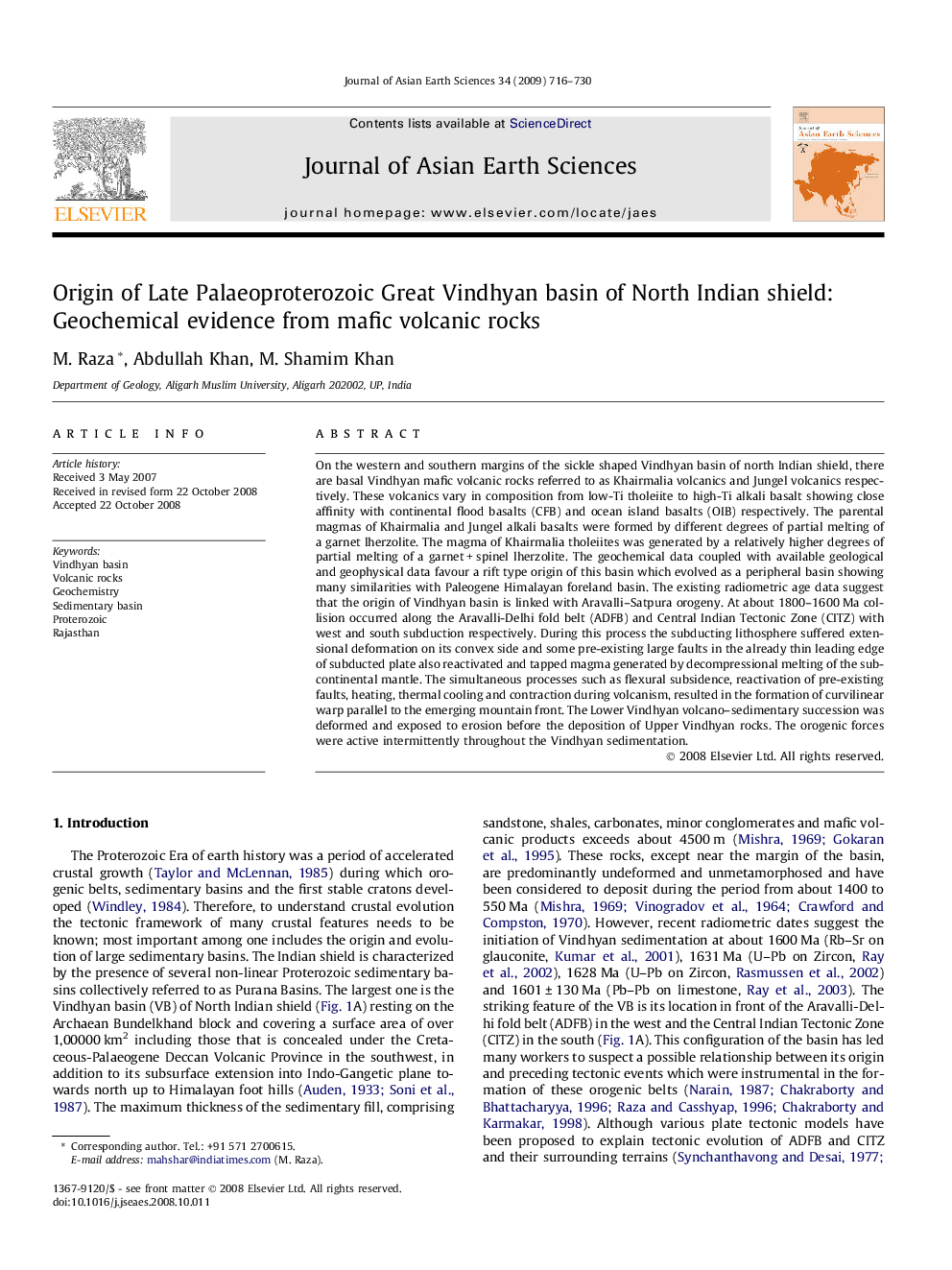| کد مقاله | کد نشریه | سال انتشار | مقاله انگلیسی | نسخه تمام متن |
|---|---|---|---|---|
| 4732133 | 1356845 | 2009 | 15 صفحه PDF | دانلود رایگان |

On the western and southern margins of the sickle shaped Vindhyan basin of north Indian shield, there are basal Vindhyan mafic volcanic rocks referred to as Khairmalia volcanics and Jungel volcanics respectively. These volcanics vary in composition from low-Ti tholeiite to high-Ti alkali basalt showing close affinity with continental flood basalts (CFB) and ocean island basalts (OIB) respectively. The parental magmas of Khairmalia and Jungel alkali basalts were formed by different degrees of partial melting of a garnet lherzolite. The magma of Khairmalia tholeiites was generated by a relatively higher degrees of partial melting of a garnet + spinel lherzolite. The geochemical data coupled with available geological and geophysical data favour a rift type origin of this basin which evolved as a peripheral basin showing many similarities with Paleogene Himalayan foreland basin. The existing radiometric age data suggest that the origin of Vindhyan basin is linked with Aravalli–Satpura orogeny. At about 1800–1600 Ma collision occurred along the Aravalli-Delhi fold belt (ADFB) and Central Indian Tectonic Zone (CITZ) with west and south subduction respectively. During this process the subducting lithosphere suffered extensional deformation on its convex side and some pre-existing large faults in the already thin leading edge of subducted plate also reactivated and tapped magma generated by decompressional melting of the subcontinental mantle. The simultaneous processes such as flexural subsidence, reactivation of pre-existing faults, heating, thermal cooling and contraction during volcanism, resulted in the formation of curvilinear warp parallel to the emerging mountain front. The Lower Vindhyan volcano–sedimentary succession was deformed and exposed to erosion before the deposition of Upper Vindhyan rocks. The orogenic forces were active intermittently throughout the Vindhyan sedimentation.
Journal: Journal of Asian Earth Sciences - Volume 34, Issue 6, 20 May 2009, Pages 716–730